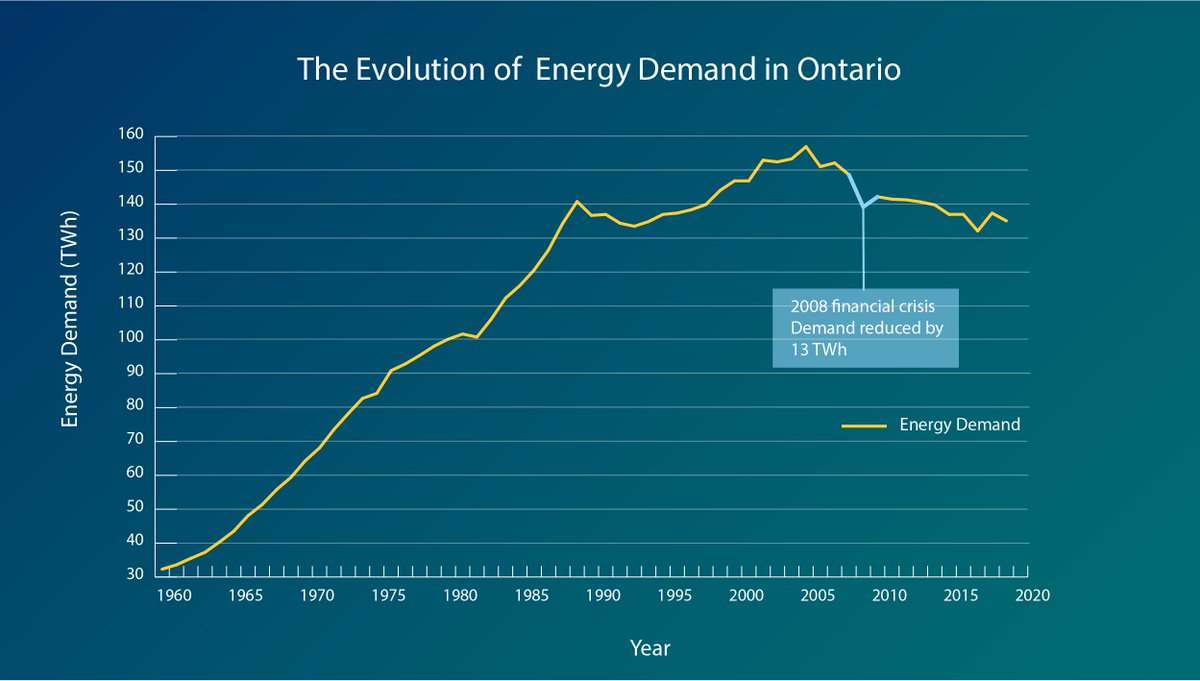Ontario, Canada has a long history of electrical grid instability and is facing a growing power shortage. This is due to a combination of factors, including the increasing demand for energy, the aging infrastructure of the electrical grid, and the increasing prevalence of extreme weather events. A study by the Ontario Energy Board found that between 2013 and 2016, Ontario experienced an average of 1,125 power outages per year, affecting over 1 million people every year (Ontario Energy Board, 2018). The outages have resulted in significant financial losses for businesses and residents, with estimates suggesting that the total cost of power outages in Ontario between 2015 and 2016 was approximately CAD $105 million (Business Development Bank of Canada, 2017).

In addition to these challenges, Canada's electrical demand is expected to increase by approximately 20% over the next decade (Canadian Energy Regulator, 2021). This increased demand, combined with the aging infrastructure of the electrical grid, has created a growing risk of power shortages and blackouts. The problem of power shortages has been exacerbated by the increasing prevalence of extreme weather events, such as heatwaves and hurricanes, which can cause significant damage to the electrical grid and disrupt power supplies (National Renewable Energy Laboratory, 2020).
In order to address the problem of electrical grid instability and power shortages, it is necessary to explore alternative sources of power generation. Solar energy has emerged as a promising solution due to its clean, renewable and reliable nature. A back-up solar system, in which solar panels are installed on homes, businesses and other buildings, can provide a constant source of power even during outages and power shortages, reducing the impact of electrical grid instability and improving energy security.
According to a report by the National Renewable Energy Laboratory, "stand-alone photovoltaic (PV) systems can provide reliable and cost-effective backup power to essential loads during outages." (National Renewable Energy Laboratory, 2018). The report found that solar panels are particularly effective in rural and remote areas, where access to the electrical grid is limited, and where traditional backup power sources such as diesel generators may not be practical. Furthermore, a study by the U.S. Department of Energy found that the deployment of solar panels can also have a positive impact on the stability of the electrical grid, helping to improve grid resilience and reduce the likelihood of blackouts (U.S. Department of Energy, 2016).
Finally, a back-up solar system can also provide cost savings for both residents and businesses. By generating their own electricity, consumers can reduce their dependence on the electrical grid and reduce their monthly energy bills. A study by the National Renewable Energy Laboratory found that "PV systems can provide cost savings over time through reduced dependence on grid electricity and reduced maintenance costs." (National Renewable Energy Laboratory, 2018).
In conclusion, a back-up solar system can provide a reliable source of power during times of electrical grid instability and power shortages and improve energy security in Ontario, Canada. By reducing dependence on the electrical grid, reducing emissions and providing cost savings, solar panels can provide a valuable solution for communities and businesses alike.
Solapowerstore.ca is the leading provider of solar energy solutions for homes and businesses. If you need help finding the right off-grid or grid-tied system, book a call with us today at the link to get started on your journey towards energy independence.

#PowerShortage #EnergyScarcity #Ontario #Canada #SolarPower #RenewableEnergy #BackUpPower #GridStability #EnergySecurity #FinancialSavings #EmissionsReduction #ClimateChange #GridResilience #ElectricityCosts #Photovoltaics #RuralPower #RemoteApplications
References: Ontario Energy Board (2018). Power Outages in Ontario: An Analysis of Customer Impacts and Causes. Toronto, Ontario: Ontario Energy Board. Business Development Bank of Canada (2017). The Cost of Power Outages in Canada. Montreal, Quebec: Business Development Bank of Canada. Canadian Energy Regulator (2021). Canada's Energy Future 2021: Energy Supply and Demand Projections to 2040. Ottawa, Ontario: Canadian Energy Regulator. National Renewable Energy Laboratory (2018). Stand-Alone Photovoltaic Systems for Rural and Remote Applications. Golden, Colorado: National Renewable Energy Laboratory. National


